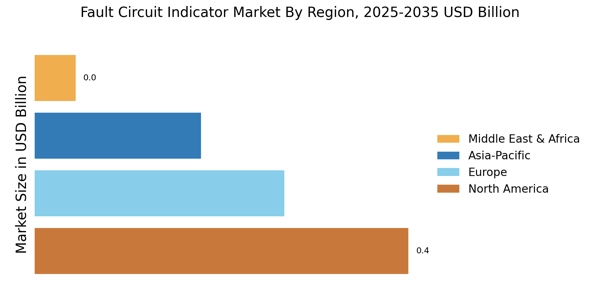Growing Awareness of Electrical Safety
Growing awareness of electrical safety among consumers and industries is a key driver for the Fault Circuit Indicator Market. As incidents of electrical failures and accidents become more widely reported, there is an increasing emphasis on safety measures in electrical installations. This heightened awareness is prompting both residential and commercial sectors to adopt fault circuit indicators as a proactive measure to prevent electrical hazards. Market analysis shows that the demand for safety-oriented electrical solutions is on the rise, indicating a favorable environment for the Fault Circuit Indicator Market. This trend highlights the importance of fault detection technologies in enhancing safety and reliability in electrical systems.
Rising Demand for Reliable Power Supply
The increasing demand for a reliable power supply is a primary driver for the Fault Circuit Indicator Market. As urbanization and industrialization continue to expand, the need for uninterrupted electricity becomes paramount. Fault circuit indicators play a crucial role in identifying and isolating faults in electrical systems, thereby minimizing downtime and enhancing service reliability. According to recent data, the global electricity consumption is projected to rise significantly, necessitating advanced solutions to ensure system integrity. This trend indicates that utilities and industries are likely to invest more in fault detection technologies, thereby propelling the growth of the Fault Circuit Indicator Market.
Regulatory Compliance and Safety Standards
Regulatory compliance and safety standards are increasingly influencing the Fault Circuit Indicator Market. Governments and regulatory bodies are implementing stringent safety regulations to ensure the reliability and safety of electrical systems. These regulations often mandate the installation of fault circuit indicators in various applications, including residential, commercial, and industrial sectors. The enforcement of such standards is expected to drive the adoption of fault circuit indicators, as companies seek to comply with legal requirements while enhancing operational safety. This trend suggests a robust growth trajectory for the Fault Circuit Indicator Market, as adherence to safety regulations becomes a priority for electrical utilities and service providers.
Technological Innovations in Fault Detection
Technological innovations in fault detection are significantly shaping the Fault Circuit Indicator Market. The advent of advanced technologies, such as IoT and AI, is enhancing the capabilities of fault circuit indicators, allowing for real-time monitoring and predictive maintenance. These innovations enable utilities to detect faults more efficiently, reducing response times and operational costs. Market data indicates that the integration of smart technologies in fault detection systems is expected to grow, with a projected increase in market share for advanced fault circuit indicators. This evolution in technology not only improves system reliability but also positions the Fault Circuit Indicator Market for substantial growth in the coming years.
Increased Investment in Renewable Energy Sources
The shift towards renewable energy sources is driving growth in the Fault Circuit Indicator Market. As more countries invest in solar, wind, and other renewable energy technologies, the complexity of electrical systems increases, necessitating advanced fault detection solutions. Fault circuit indicators are essential for managing the reliability of these systems, ensuring that faults are quickly identified and addressed. The investment in renewable energy infrastructure is expected to rise, with projections indicating a significant increase in capacity over the next decade. This trend suggests that the Fault Circuit Indicator Market will benefit from the growing need for reliable fault detection in renewable energy applications.


















Leave a Comment